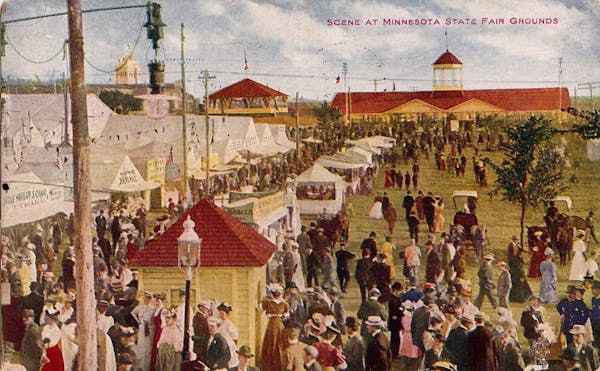If Nicollet Mall had a theme song, it just might be Pete Seeger's "Where Have All the Flowers Gone."
Downtown's primary pedestrian thoroughfare is now five years into an overhaul designed by New York City-based James Corner Field Operations. The firm's $50 million remake is not without its strengths, but a major weakness is its depressing lack of greenery.
Not trees. The new mall actually boasts twice as many trees as its predecessor. It's the decided lack of greenery at the ground level that's so glaringly noticeable, a situation accentuated by Nicollet's relentless ribbon of concrete.
Is this the city's most pressing issue? Hardly. But if political and business leaders want to lure workers back to their offices and return some semblance of pre-pandemic liveliness to downtown Minneapolis, shouldn't every effort be made to put the city's best foot forward?
One way to do that is to make Minnesota's Main Street the pedestrian showplace that was promised. The parklike greensward of the rendering for the planned remake doesn't match the current stark reality.
What's the roadblock? Is it a labor shortage? A strained budget? Faulty irrigation systems? Salt-damaged soil? Indifference? It can't be that anyone in charge sees mulch as the answer to their beautification prayers while willfully ignoring the existence of hydrangeas, coneflowers and monarda.
But mulch — a veritable sea of mulch — is what we have. And concrete. Nicollet is in desperate need of a profusion of annuals, perennials, flowering shrubs and ornamental grasses.
An attractive Nicollet could be a lively, welcoming Nicollet. Additionally, that beauty could help boost the perception of a safe Nicollet. Here are five un-asked-for suggestions to help Nicollet Mall.
Flowers, not wood chips
In its latest renovation, the mall was divided into districts. For the blocks from Grant Street to 12th Street and from 4th Street to Washington Avenue, much of the sidewalk right-of-way has been given over to large, open beds (edged by curb-like concrete barriers) that were intended to be filled with trees and a variety of low-to-the-ground greenery.
The firm dubbed these two zones Woods, as in Mississippi Woods, at Nicollet's north end, and Loring Woods to the south. But today, a more appropriate name would be Wood Chips, because that's the visual takeaway.
Those roomy beds are little more than dreary expanses of brown mulch, sadly punctuated by the occasional plant. Instead of mulch, imagine thousands of blooming marigolds, zinnias, geraniums, begonias or impatiens, providing a much-needed jolt of mood-enhancing color to lessen the tedium of Nicollet's concrete doldrums.
More flower pots per block
Stylish pots filled with colorful annuals materialized on Nicollet nearly two years after the project's formal 2017 dedication. Their appearance was a signal that it's possible to address Nicollet's shortcomings without significant infrastructure investment.
The vessels — yeah, more concrete, but tinted a handsome dark graphite —are outfitted in three sizes (and often placed in pairs or trios), and the privately funded Downtown Improvement District performs a first-rate maintenance job.
There are about 50 pots scattered up and down Nicollet, which is a good start, but why aren't there 150? Or 250? The current numbers average out to about three pots per block, a paltry figure, especially given the obvious need to enliven Nicollet's monochromatic blandscape.
More places to sit
One of the makeover's most-talked-about Nicollet amenities is a series of custom-designed movable chairs. Painted in cheery tones of blue, yellow or green, they inject welcome pops of color into Nicollet's relentless concrete expanse. But where are they?
On a recent afternoon there were just 22 chairs (and four tables) parceled out among four blocks of Nicollet. That means that the mall's eight other blocks went without a place to take a seat.
No more bollards
Why bother with these bollards — yes, it's more lackluster concrete — when similarly scaled flower pots, filled with eye-pleasing greenery, could serve the same purpose?
Setting a good example
To demonstrate that blooming beauty is possible on Nicollet, witness the well-tended landscape outside Westminster Presbyterian Church (it's the work of the Chicago-based landscape architecture firm of Hoerr Schaudt, in collaboration with JDD Studio of Minneapolis). The church's congregation obviously places a priority on urban beauty; here's hoping that Nicollet will follow this sterling example.

For 'Legally Blonde' star, 'being underestimated is her secret superpower'

Restaurant openings and closings in the Twin Cities

Minnesota's Amy Thielen launches old-fashioned radio show for food lovers
Yuen: How success has pushed Minnesotans off sidelines in trans athlete debate

